Hampstead House revives neglected Trevor Dannatt modernist home
Hampstead House by Coppin Dockray is the sensitive restoration of an overlooked Trevor Dannatt modernist home

Saved from possible demolition, a post-war Hampstead house designed by titan of British modernism, Trevor Dannatt, has had years of piecemeal additions peeled back in a refurbishment for a young, growing family. Coppin Dockray, an architecture studio familiar with employing historical sensitivity in its delicate revivals of 20th-century buildings, strikes a meticulous balance of preserving the house’s original character while infusing contemporary boldness and resilience in the new design. As a result, this is a versatile, unobtrusive, modern Hampstead house, cradled between grand Edwardian terraces and towering oaks.
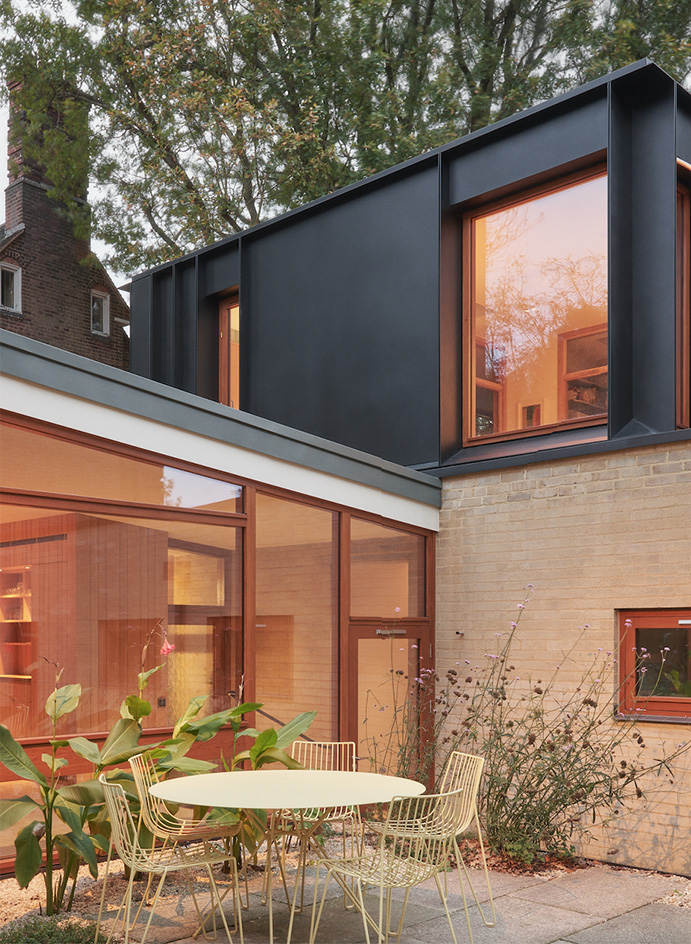
Hampstead House by Coppin Dockray
Hampstead House faced a series of awkward extensions in the 1960s and 1980s and its own poorly constructed, uninsulated, and dated building fabric had to be prised from an overgrowing garden. While fully restoring Dannatt’s original California-inspired design was out of the question for practical reasons (some parts were too damaged to be salvageable), the architects and client agreed that reimagining its original elegance would be sufficient conservation and homage.
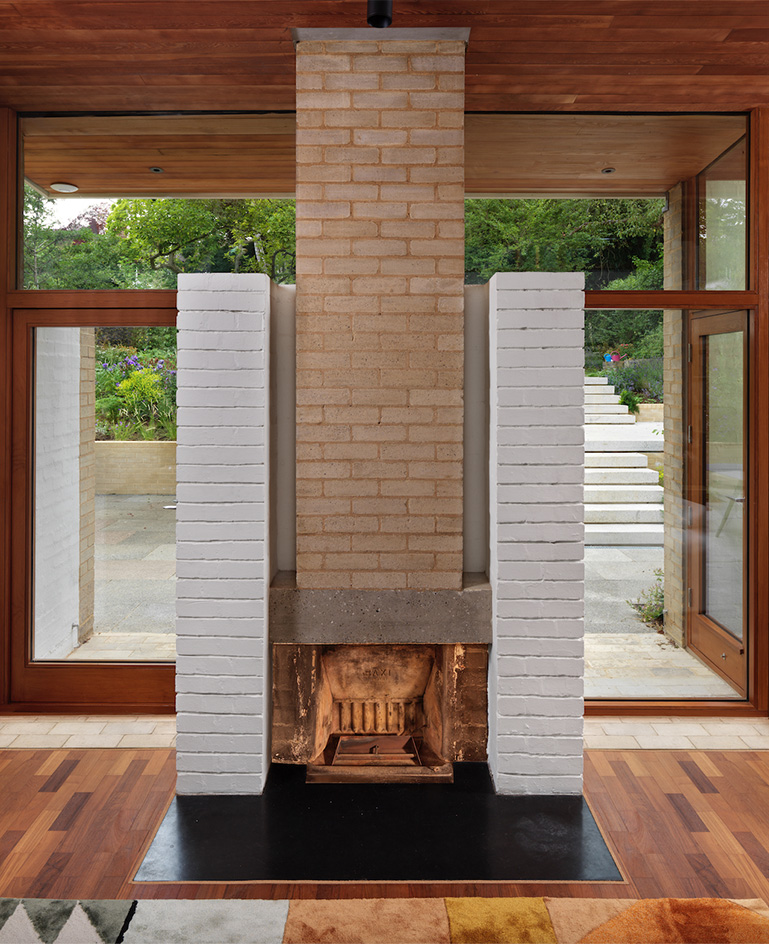
Sitting in a dip on a tricky wedge-shaped plot, the home is a checkerboard of stepped pavilions with roofs of varying heights surrounding a central courtyard. The house’s gardens and patios are brought inside through expansive windows and often double-height ceilings, each room offering a distinct landscape of flourishing British flora. To fit the new family’s needs, a playroom was added to the ground floor whilst additional bedrooms and a study formed the upper floor.
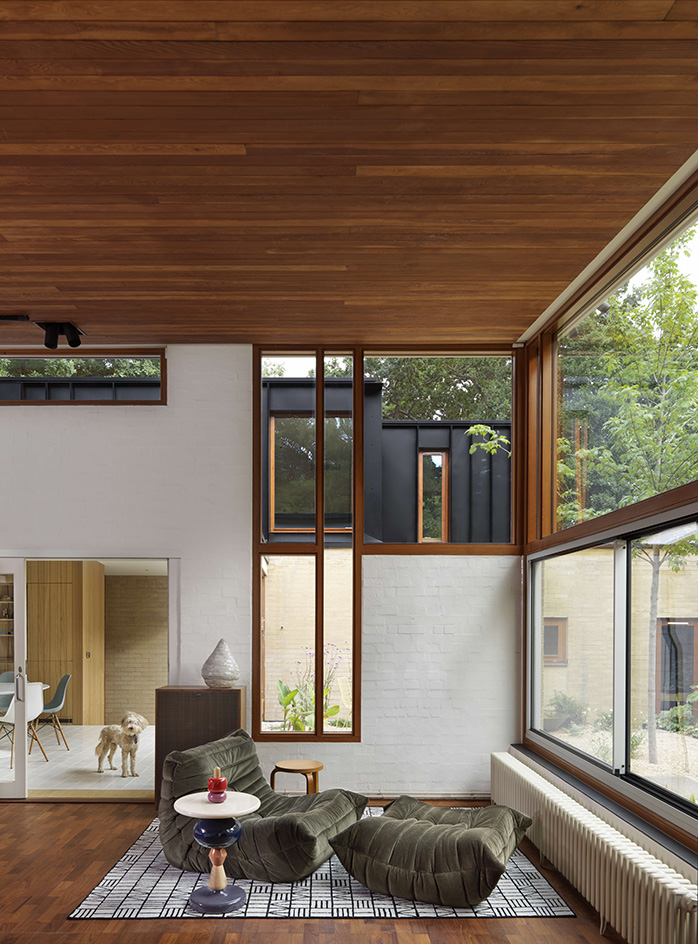
Unusually illuminated with natural daylight for a north-facing site, the materiality of the house is noticeably, deliberately simple. Solid brick walls, either left exposed or white-washed on the interior are connected by sweet chestnut flooring, bespoke joinery, and staircases. The kitchen, the heart of the home, glows warm with wood-panelled fittings under a large rooflight segmented with baffles. A collage of vintage, custom, and new furniture ornament the house, creating a 'lived-in', domestic quality.

In addition to the carefully chosen materials that no doubt will improve the home’s life span, improved ventilation and insulation factor into the renovation’s future-proof construction. ‘We worked methodically to improve the energy performance,’ the architects explained, adding that the result of these interventions was a notable 59 per cent improvement in the home's annual carbon emissions.
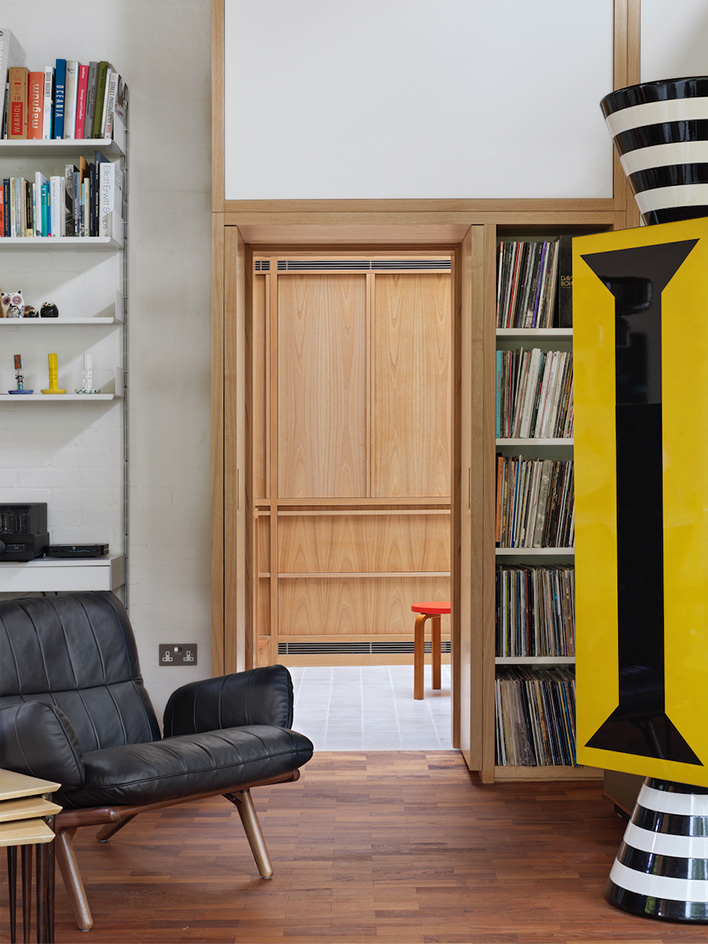
‘Despite the site’s restrictions, animated, dappled light always tracks through the interior spaces via discreet clerestory windows, a double-height void, or attentively framed window views,' write the architects. Indeed, in spite of the difficulties and restrictions tied to working with such a challenging, rich site, this breath of fresh air to the new family home renders it as charming as it was 60 years ago. 'For such a slender north-facing building, it enjoys a surprising and constant in-between quality – neither ever fully interior nor exterior.'
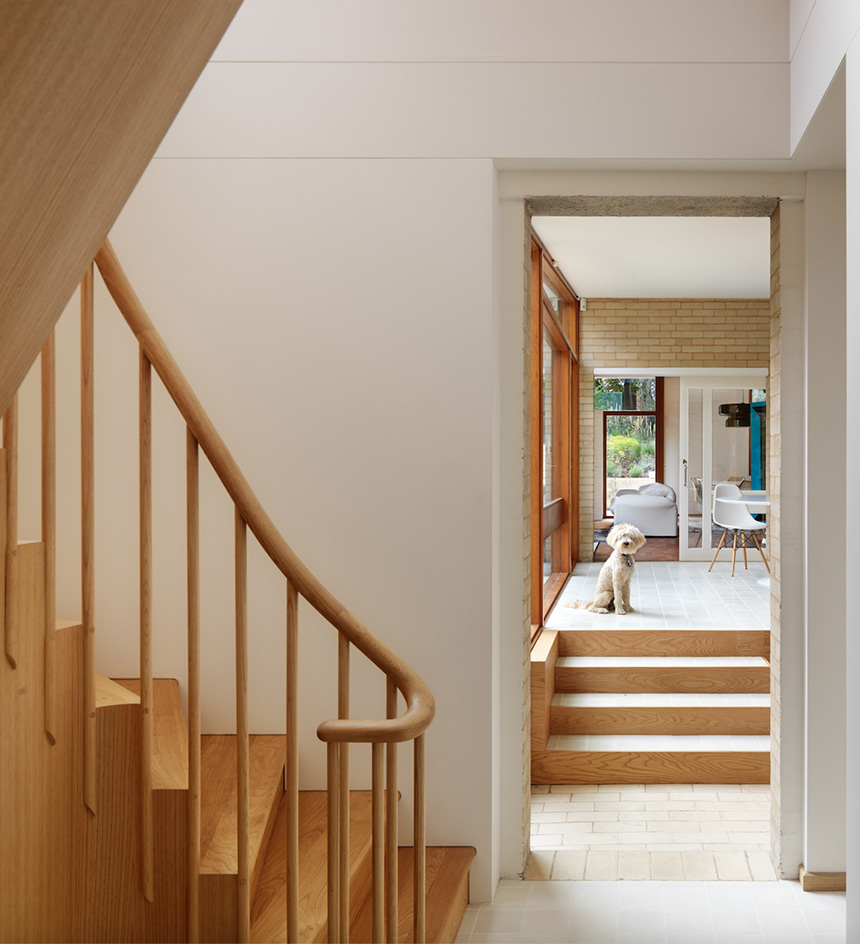

Receive our daily digest of inspiration, escapism and design stories from around the world direct to your inbox.
-
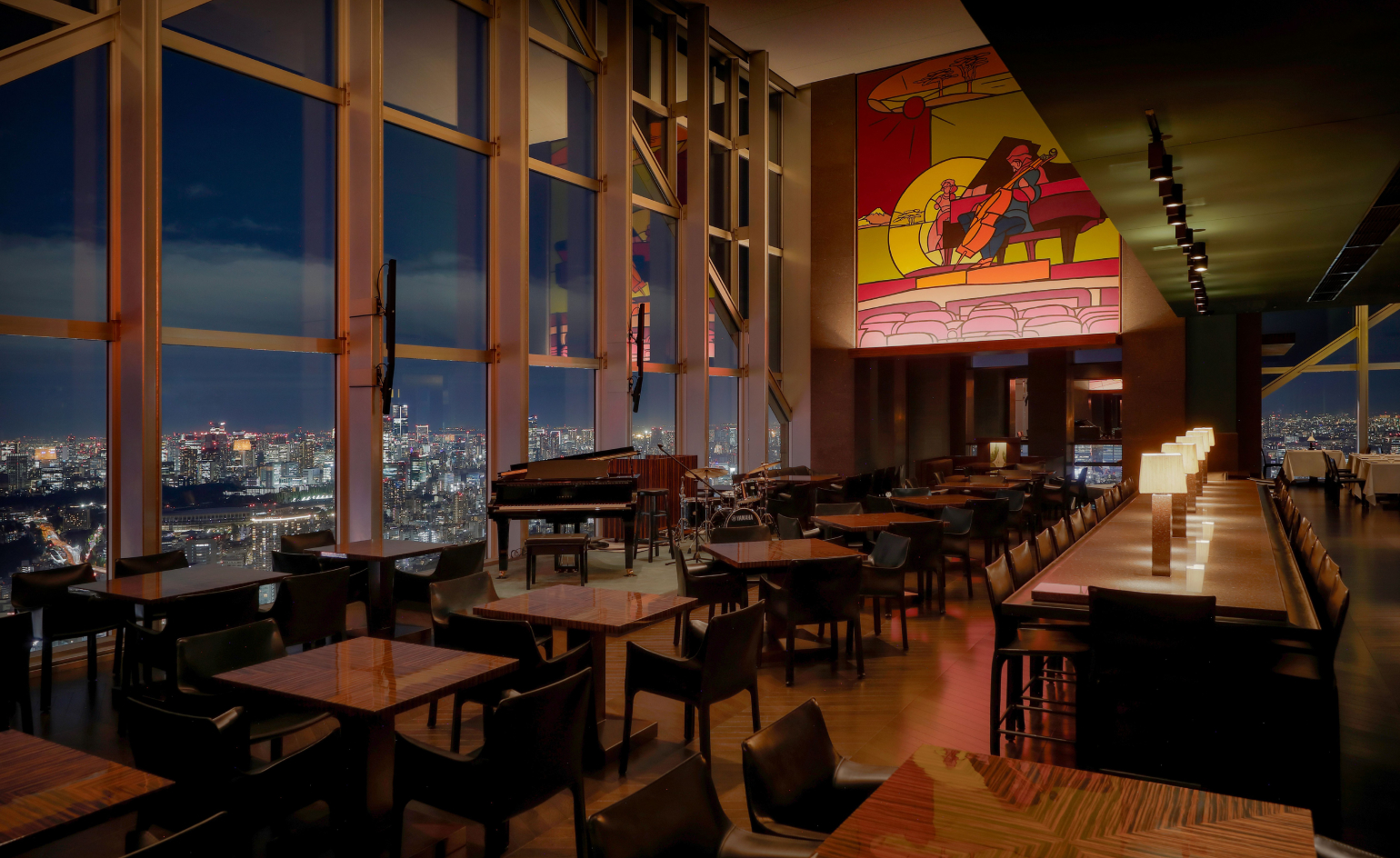 Tokyo’s most cinematic stay reopens as an exercise in architectural self-control
Tokyo’s most cinematic stay reopens as an exercise in architectural self-controlPark Hyatt Tokyo and Studio Jouin Manku demonstrate how design can evolve without erasing memory, balancing modernist heritage with contemporary comfort
-
 Korean designer Yoonjeong Lee tells ordinary stories in extraordinary ways
Korean designer Yoonjeong Lee tells ordinary stories in extraordinary waysWallpaper* Future Icons: Yoonjeong Lee's work is based on a fascination for utilitarian objects, from pencils to nails, recreated with innovative casting methods
-
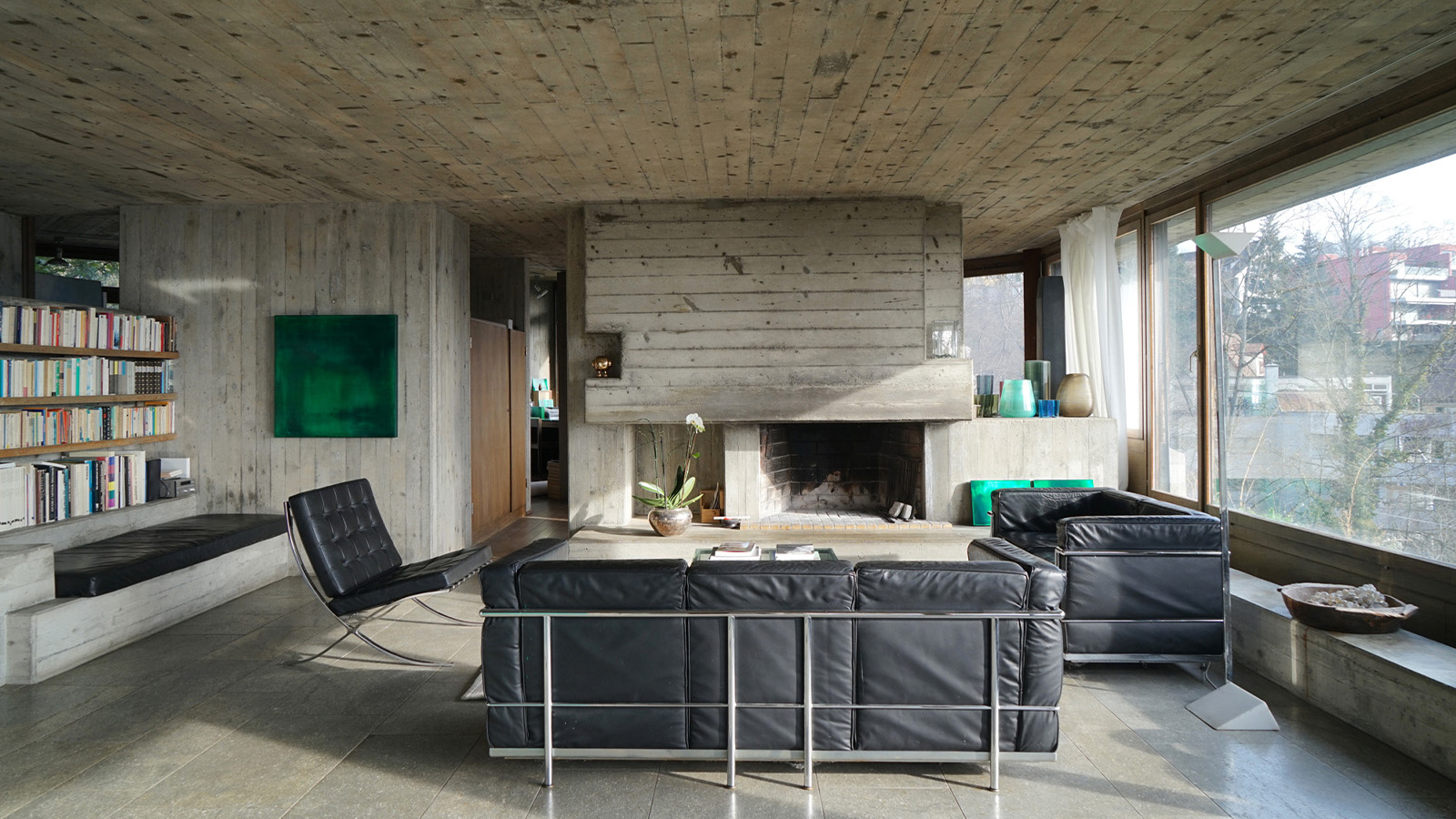 Inside architect Andrés Liesch's modernist home, influenced by Frank Lloyd Wright
Inside architect Andrés Liesch's modernist home, influenced by Frank Lloyd WrightAndrés Liesch's fascination with an American modernist master played a crucial role in the development of the little-known Swiss architect's geometrically sophisticated portfolio
-
 Arbour House is a north London home that lies low but punches high
Arbour House is a north London home that lies low but punches highArbour House by Andrei Saltykov is a low-lying Crouch End home with a striking roof structure that sets it apart
-
 A former agricultural building is transformed into a minimal rural home by Bindloss Dawes
A former agricultural building is transformed into a minimal rural home by Bindloss DawesZero-carbon design meets adaptive re-use in the Tractor Shed, a stripped-back house in a country village by Somerset architects Bindloss Dawes
-
 RIBA House of the Year 2025 is a ‘rare mixture of sensitivity and boldness’
RIBA House of the Year 2025 is a ‘rare mixture of sensitivity and boldness’Topping the list of seven shortlisted homes, Izat Arundell’s Hebridean self-build – named Caochan na Creige – is announced as the RIBA House of the Year 2025
-
 In addition to brutalist buildings, Alison Smithson designed some of the most creative Christmas cards we've seen
In addition to brutalist buildings, Alison Smithson designed some of the most creative Christmas cards we've seenThe architect’s collection of season’s greetings is on show at the Roca London Gallery, just in time for the holidays
-
 In South Wales, a remote coastal farmhouse flaunts its modern revamp, primed for hosting
In South Wales, a remote coastal farmhouse flaunts its modern revamp, primed for hostingA farmhouse perched on the Gower Peninsula, Delfyd Farm reveals its ground-floor refresh by architecture studio Rural Office, which created a cosy home with breathtaking views
-
 A revived public space in Aberdeen is named Scotland’s building of the year
A revived public space in Aberdeen is named Scotland’s building of the yearAberdeen's Union Terrace Gardens by Stallan-Brand Architecture + Design and LDA Design wins the 2025 Andrew Doolan Best Building in Scotland Award
-
 The Architecture Edit: Wallpaper’s houses of the month
The Architecture Edit: Wallpaper’s houses of the monthFrom wineries-turned-music studios to fire-resistant holiday homes, these are the properties that have most impressed the Wallpaper* editors this month
-
 A refreshed 1950s apartment in East London allows for moments of discovery
A refreshed 1950s apartment in East London allows for moments of discoveryWith this 1950s apartment redesign, London-based architects Studio Naama wanted to create a residence which reflects the fun and individual nature of the clients